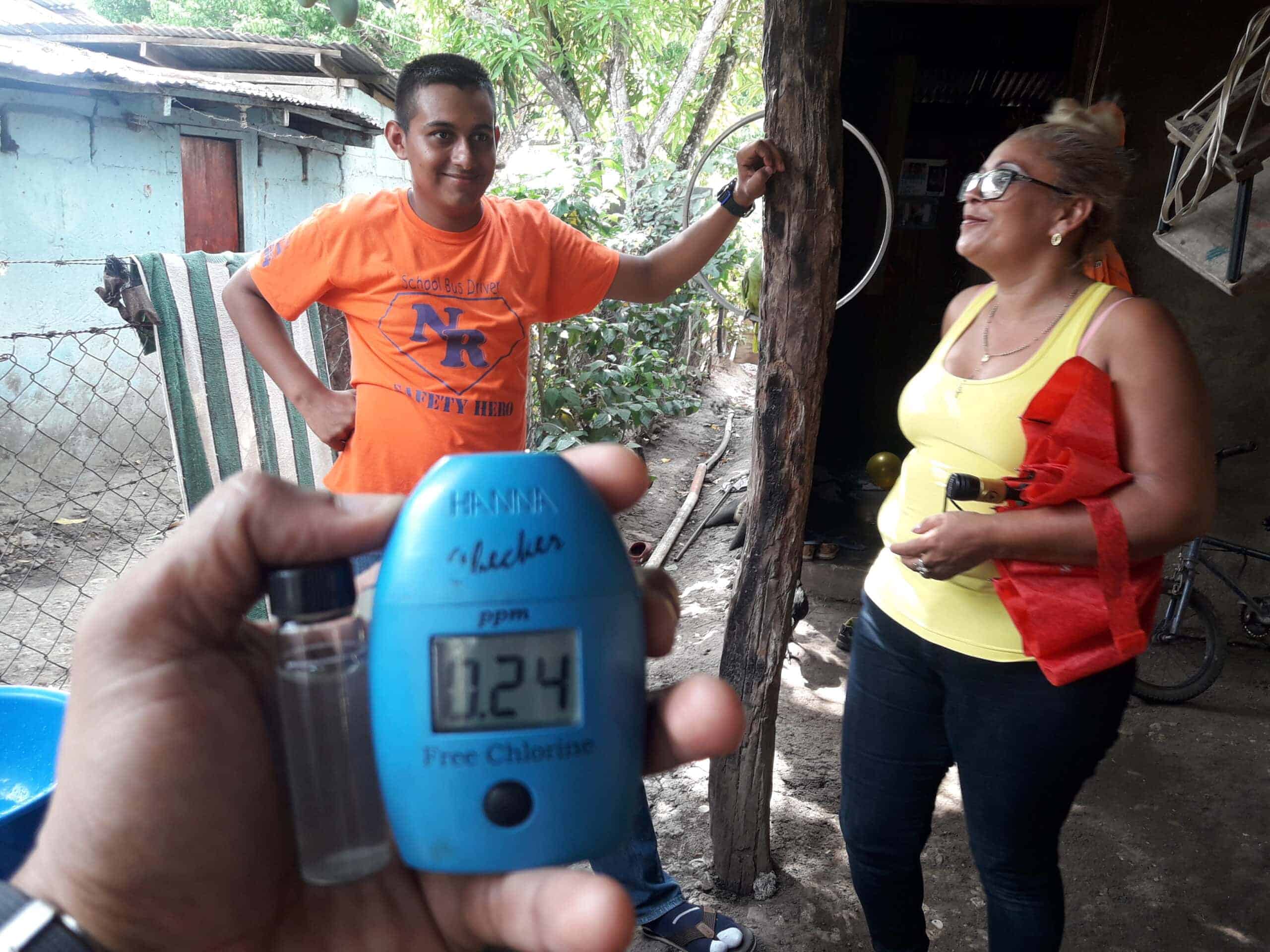
By Orlando Montiel Salas, Clean Water Program Officer
El Sincoyal is a rural community in Río San Juan, Nicaragua, located 60 miles north of the Self-Help International offices in San Carlos. It has 121 houses and approximately 500 people. Before 2018, the town water supply came from two communal and three home wells that worked with rope pumps. In November 2018, the Mayor’s Office, in conjunction with the Emergency Social Investment Fund (FISE), inaugurated a project to improve the water system in the community.
The head of the El Sincoyal health post, Pastora, has lived in the community for 13 years. She commented that when adequate water chlorination had not been provided, community members (especially children) had been experiencing diarrhea, urinary infections, and vomiting. There used to be 12 cases per month of these water-borne diseases. Quality tests were carried out and the water was contaminated with fecal coliforms.
The FISE project rehabilitated one of the community wells, introducing a submersible electric pump and incorporating a chlorination device to eliminate contamination from the water. The final part of the project included a storage basin in the upper part of the town from which to distribute the water by gravity to the houses in the community.
The chlorinator that was installed to chlorinate the water was not efficient in eradicating microbiological contamination of the water because it did not discharge an adequate amount of chlorine. From 0.50 ppm (parts per million) up to 1.00 ppm of chlorine is necessary to disinfect the water and eliminate bacterial contamination. This chlorinator achieved chlorine concentrations of only 0.21 ppm, well below the minimum; therefore, contamination in the water and diarrheal diseases in the population still persisted.
Jahaira is the president of the Water and Sanitation Committee (CAPS) in El Sincoyal. She has lived in the community for 20 years. She was concerned about improving water quality, so she began to investigate. She contacted Orlando Montiel, Self-Help’s Clean Water Program Officer, and explained the situation. Orlando agreed to make a technical inspection visit to the community’s water supply.

When Orlando performed chlorination tests at several houses, he found that the chlorine present in the pipes was insufficient to disinfect the water. The results ranged from 0.21 ppm to 0.24 ppm. Based on these tests, he proposed changing the chlorinator they were using to the new design that the Self-Help water program was promoting. Jahaira made a proposal to the other CAPS members, and they approved the installation of the new Self-Help chlorinator by Orlando.
The community has been using the Self-Help chlorinator since 2020, and the results are encouraging. Pastora, the nurse at the health post, commented that diarrheal diseases no longer occur in the population, and urinary infections are no longer common reasons for consultations. Water from the health post measured 0.63 ppm of chlorine, within the range determined by the Nicaraguan Ministry of Health as an adequate concentration to disinfect it.
The directors of the CAPS toured several houses to verify the presence and efficiency of water chlorination with the new chlorinator. The result was an average test of 0.78 ppm of chlorine present in the water that flows through the town’s pipes. This is an excellent measure of the quality of the water intended for human consumption, indicating that there should be no bacterial proliferation in the water from the basin and pipes. For their part, Jahaira and the other CAPS members feel confident that they can drink the water without worrying about getting sick or suffering from other diseases.

Powered by Wapiti Digital #servetheherd
This is my rich text.
This is more rich text.
I am a list
Lists are cool